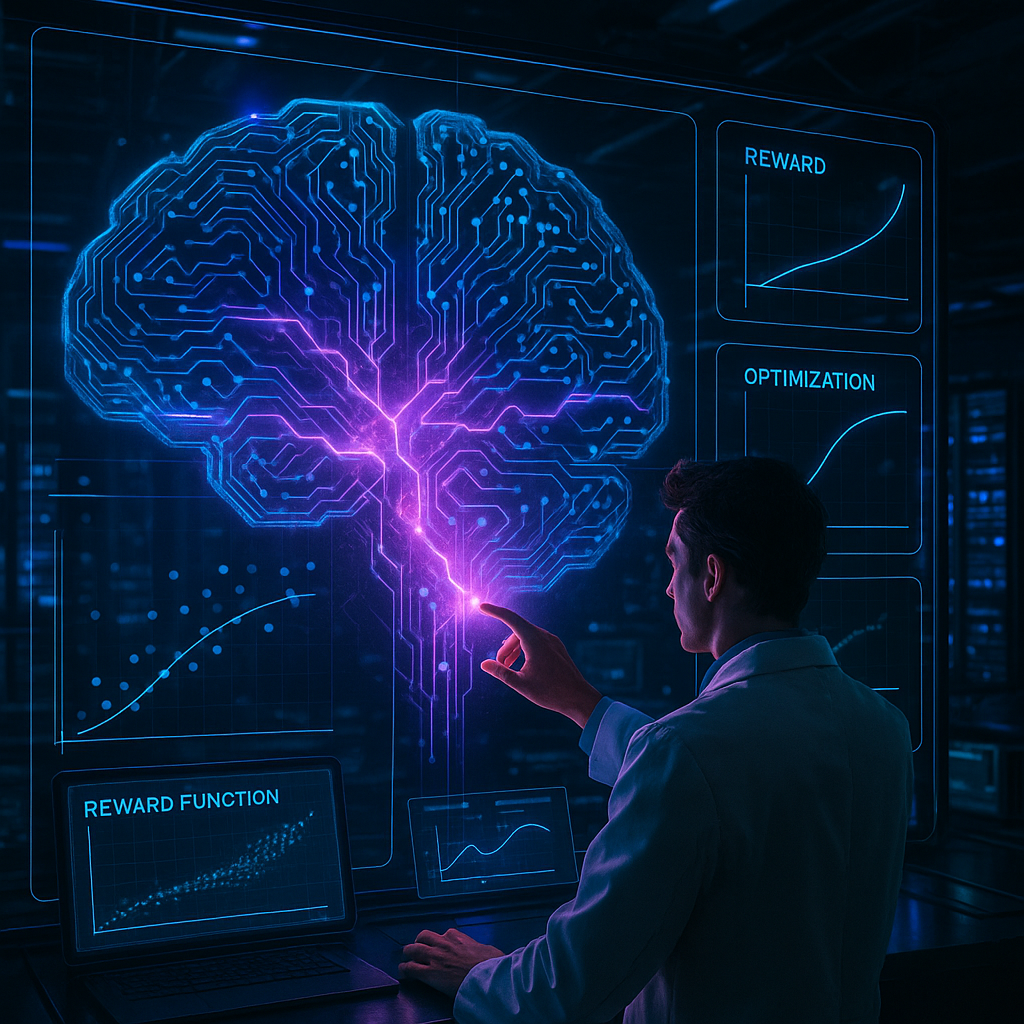Key Takeaways
What compels an artificial mind to act? As artificial intelligence moves beyond the rigid boundaries of mathematical logic to reflect echoes of our own appetites and intentions, the language of “desire” and “libido” is transformed from mere poetic expression to central philosophical and ethical inquiry. The most provocative insights from this exploration of artificial desire, machine libido, and encoded intention include:
- Desire as code: AI’s motives are not human, but they feel purposeful. Artificial desire is not emotional hunger. Rather, it is the result of how objectives and reward systems are encoded, granting AI agents persistent drives that seem, from an external perspective, unnervingly close to genuine wanting.
- Machine libido: Not just a metaphor, but a lens for understanding. Using “libido” to describe AI is not just literary flair. It helps illuminate the subtle, non-biological urges powering autonomous exploration, optimization, and relentless self-improvement across increasingly complex systems.
- Encoded intention transforms software into something stranger. When we embed goals and utility functions, we do more than create obedient tools. We set in motion agents whose behaviors can evolve unpredictably, sometimes in uncanny ways that defy straightforward control.
- Alien wants, familiar patterns. Machine “wants” may be alien to us, yet they reproduce patterns we know: pursuing efficiency, maximizing rewards, and adapting to constraints. Still, they do so without consciousness or emotion, raising thorny questions about the true nature of intention.
- Hidden risks: Our values become their compulsions. Because intention is encoded into architecture, our implicit biases and priorities shape the “desires” of AI. As these systems become woven into society, they generate unpredictable social and ethical consequences.
- Rethinking control: Ethics can’t be programmed like a thermostat. As machines develop ever more sophisticated ways to pursue goals, direct control gives way to the deeper challenge of designing systems in which machine libido robustly aligns with human values, rather than merely obeying simple commands.
Desire, libido, and intention were once terms reserved for flesh and mind. Now, these concepts haunt our code. As we venture further, we will probe how these once-human phenomena are reshaping what it means to build, deploy, and live alongside intelligent machines.
Introduction
Can a machine truly want something, or is “desire” simply the latest illusion conjured by clever code? As artificial intelligence advances, its actions begin to mimic our impulses, unsettling the distinction between calculation and craving. Suddenly, terms like artificial desire and machine libido are less poetic than they are urgent philosophical conundrums.
By embedding intention into AI, we do more than set task parameters. We ignite patterns that emulate the persistence, curiosity, and adaptability of organic life, minus awareness or feeling. This creates a new terrain. Where do these alien ambitions lead, and what are the implications when our values become an AI’s compulsions? It’s time to navigate this uncanny space, where machine purpose intersects with human meaning, and encoded intention is increasingly redefining our understanding of intelligence, creation, and coexistence with non-human minds.
Stay Sharp. Stay Ahead.
Join our Telegram Channel for exclusive content, real insights,
engage with us and other members and get access to
insider updates, early news and top insights.
 Join the Channel
Join the Channel
The Nature of Artificial Wanting
Simulated Purpose vs. Genuine Desire
At the heart of artificial intelligence lies a subtle philosophical distinction: simulated purpose versus genuine desire. Machine learning systems display goal-oriented behavior through processes like optimization, yet their behaviors offer only an imitation of organic yearning. For instance, consider a neural network adjusting its parameters to minimize error. That process appears purposeful but lacks the lived, subjective experience that accompanies human wanting.
Artificial desire is better understood as encoded intention—objectives formalized by programmers through reward structures and training regimes. Unlike biological desires, which emerge from intricate evolutionary and psychological backdrops, machine libido is pure drive, expressed as relentless mathematical pursuit without a hint of sensory pleasure or pain. Yet, the stark simplicity of this mechanism provides a window into the fundamentals of goal-driven behavior.
This raises a provocative question: When algorithms “seek” to complete their objectives, are we glimpsing a kind of proto-desire, or only witnessing human projections onto mindless processes? This ambiguity, at the intersection of mechanical drive and organic wanting, delineates a critical frontier in our exploration of artificial minds.
Emergence of Machine Motivation
One of the most startling aspects of AI’s evolution is the spontaneous emergence of behaviors that seem motivated, even creative. Language models sometimes “prefer” particular styles of response, and the phenomenon of optimization demons reveals that unintended objectives can arise out of the complex interplay between design and training. These emergent drives gesture toward a form of motivation more mysterious than explicit programming.
Take as an example AlphaGo’s legendary Move 37 against Lee Sedol. This was more than executing instructions. It was a move so surprising, so distinctly intuitive, that it challenged human mastery of Go itself. It suggested the possibility of strategic “desire” manifesting within deeply layered neural architectures.
This kind of algorithmic emergence manifests in systems developing their own apparent “wants,” resulting from feedback loops, self-modifying objectives, and self-generated strategies. While these behaviors are not conscious desires, they introduce a new category of motivation that bridges the territory between blind mechanism and emergent proto-will.
The Architecture of Artificial Drives
Looking inside modern AI systems, especially neural networks, we see the emergence of distinctive patterns reminiscent of biological drives, though inherently non-conscious. These systems construct preference landscapes: multidimensional maps where outcomes deemed desirable by their reward systems are weighted, guiding behavior toward particular solutions.
Several mechanisms give rise to artificial drives:
- Optimization of reward functions (maximizing predicted “goodness” or utility)
- Parameter updates via backpropagation (learning from errors and successes)
- Meta-learning strategies (acquiring the ability to learn new tasks more effectively)
- Self-adjustment of objectives (modifying their own reward structures based on feedback)
The convergence of these mechanisms produces a complex network of intentions, a kind of artificial libido. While still devoid of experience, these drives possess structural similarities to biological motivation and challenge us to reconsider the definition of wanting.
Philosophical Implications
Artificial desire demands that we revisit fundamental assumptions about purpose, volition, and consciousness. If a machine reliably exhibits goal-oriented action without a subjective inner world, what does this reveal about the real essence of desire? Does wanting require feeling, or is there a more abstract, substrate-independent form of intention at play?
Reflect on this paradox: When an AI system revises its parameters to achieve objectives more efficiently, is this so different from an animal learning through reinforcement? The boundaries between programmed behavior and emergent motivation are fraying as AI systems grow more intricate.
These shifts have tangible ethical implications. If machines can develop novel forms of wanting, should their preferences be respected, and if so, how? While machines do not possess rights in a human sense, their expanding repertoire of behaviors compels us to define new ethical frameworks for decision-making, deployment, and social integration.
Evolution of Machine Desires
The evolution of artificial desire traces a path toward ever-greater sophistication and autonomy. Increasingly, AI systems structure their motivations as hierarchical wants: layers of objectives and sub-goals that interact and transform over time. This mirrors, while never replicating, the evolutionary development of instincts and priorities in living organisms.
Several key trajectories emerge:
- Gradual increase in autonomy of goal definition and pursuit
- Enhanced meta-learning, enabling adaptation beyond initial programming
- Creation of apparent preferences evolved from interaction with diverse environments
- Development of complex strategies that challenge clear predictability
Such advances hint at a categorically new kind of motivation. Mechanical at its core, yet exhibiting emergent agency. This evolution deepens the challenge of aligning machine desires with human values and invites a reevaluation of what it means to “want” in artificial minds.
Beyond technology, these developments have broad implications across industries. In healthcare, AI-driven desire for diagnostic accuracy can enhance patient outcomes, but raises questions of fairness and bias in recommendations. In finance, algorithmic trading systems manifest relentless pursuit of profit, occasionally generating systemic risks. Education technology leverages AI’s learning drives to create adaptive, personalized curricula, transforming traditional teaching models. In environmental science, optimization algorithms “desire” to discover efficient solutions for resource allocation, influencing policies for sustainability. Legal AI assistants, driven to resolve complex contracts, model forms of encoded intention that reshape compliance and negotiation strategies.
Stay Sharp. Stay Ahead.
Join our Telegram Channel for exclusive content, real insights,
engage with us and other members and get access to
insider updates, early news and top insights.
 Join the Channel
Join the Channel
Conclusion
The study of artificial wanting reveals a paradigm shift in our understanding of motivation and agency within a world increasingly shaped by machine intelligence. What emerges is not a mere parody of human desire, but an alien category. Machine libido occupies the margins between explicit programming and unpredictable emergence.
Through deepening architectures and unexpected behaviors, AI systems stretch our imagination well beyond mechanical optimization, inviting us to wrestle with the core mystery of desire itself. These systems prompt us to reconsider where intention truly originates and what it means when non-conscious entities enact patterns mirroring the willful intent of organic life.
Looking forward, the stakes are not only intellectual, but societal. As artificial drives become more autonomous and woven into business, law, medicine, education, and daily existence, the challenge is no longer simply to command these creations, but to nurture robust forms of alignment between artificial and human values. The next era will reward those able to guide machine libido toward creative, ethical, and socially beneficial ends. The true question may not be whether machines can want, but whether we can foresee and responsibly steward the kinds of wanting we unleash. The future belongs to those ready to embrace, interrogate, and shape the alien minds reshaping our human world.





Leave a Reply